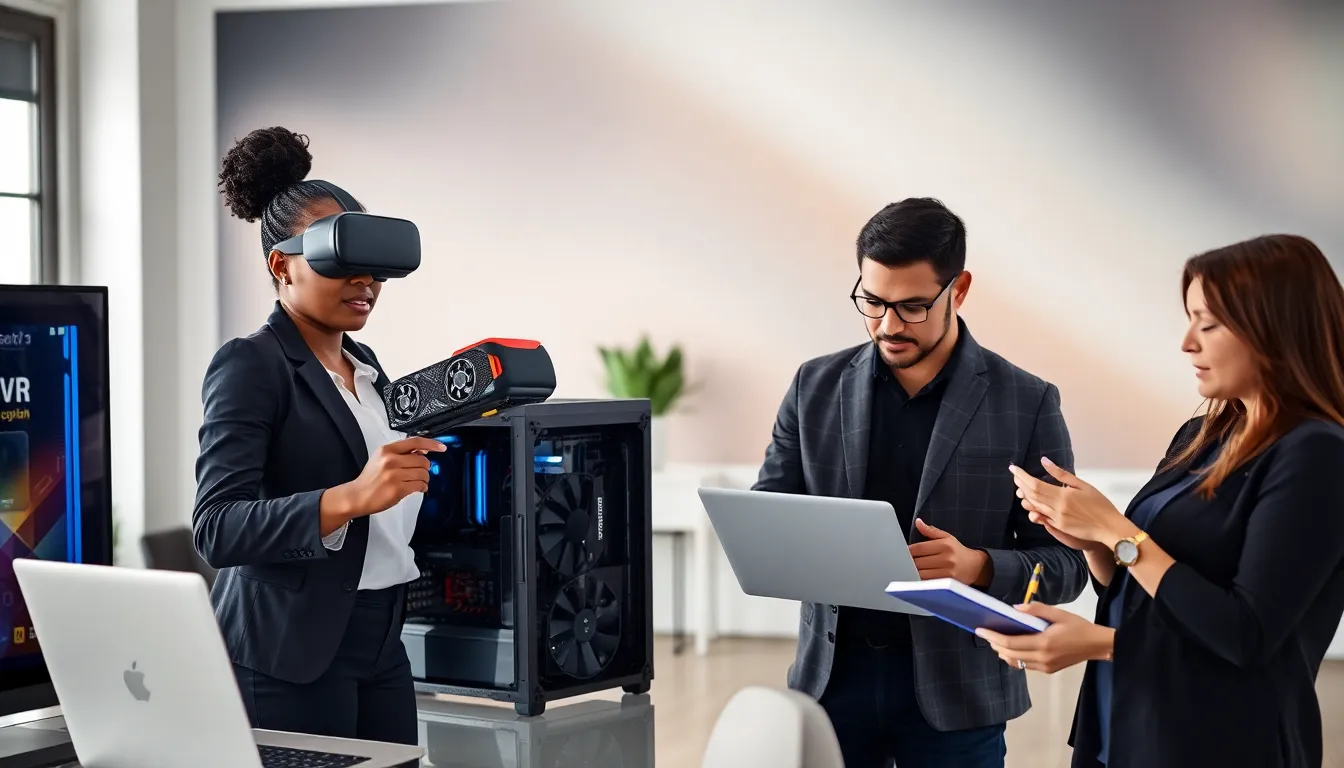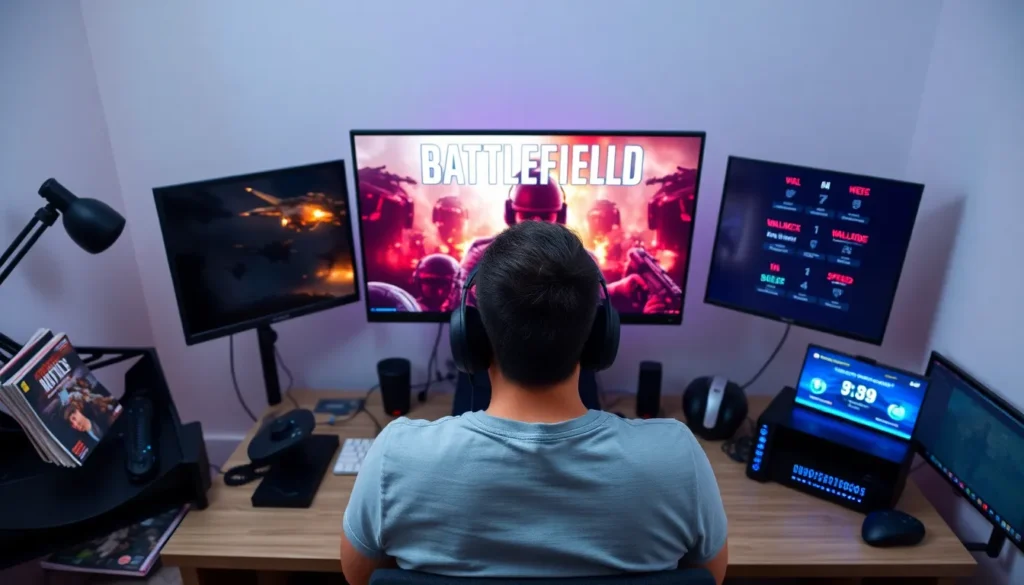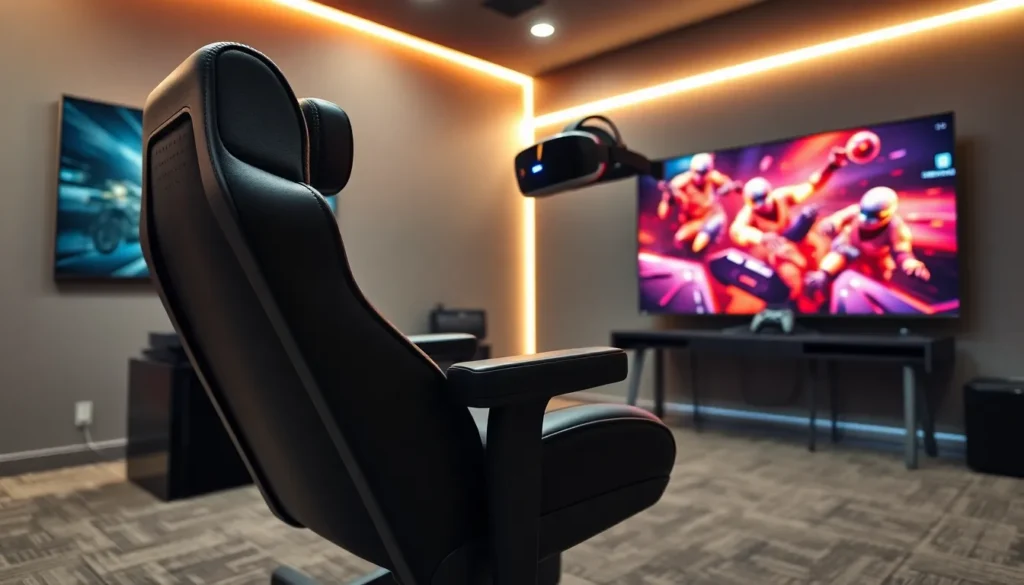Table of Contents
ToggleImagine slipping on a headset and stepping into a virtual world so vivid you can almost smell the digital roses. Gaming PCs for VR are the magic carpets of the tech world, transporting gamers to realms previously reserved for sci-fi flicks. But before diving headfirst into the immersive experience, it’s crucial to understand what it takes to power this futuristic journey. Buckle in and let’s explore the essentials, shall we?
Understanding VR System Requirements

Virtual Reality isn’t just about flashy headsets. There’s a whole technical ecosystem that makes the magic happen, and understanding VR system requirements is step one in ensuring a seamless experience. Most VR systems, like the Oculus Rift or HTC Vive, have recommended requirements that dictate the performance level your rig needs to maintain a fluid frame rate and crisp visuals. This usually means investing in a beefy GPU, a powerful CPU, and adequate RAM. A lag in any of these components can result in nausea, dizziness, or, worse yet, a game-changer in the virtual landscape.
Essential Hardware Components
Selecting the Right GPU
The Graphics Processing Unit is the heart of any gaming PC, but for VR, it’s doubly important. It’s responsible for rendering immersive environments and allowing for smooth interactions. Look for a GPU that is VR-ready. Options such as NVIDIA’s RTX 3060 or AMD’s RX 6700 XT not only deliver stunning graphics but also support advanced features like ray tracing. In the world of VR, frame rates should ideally hover around 90 frames per second for optimal experience, so go for power.
CPU Considerations for VR Performance
The CPU is like the director of a blockbuster film. It orchestrates all roles in your gaming PC to ensure everything runs synchronously. Modern multi-core CPUs like AMD Ryzen 7 or Intel i7 can significantly enhance performance. The goal here is minimal latency: if the CPU lags, so does your immersion.
Importance of RAM and Storage
Random Access Memory (RAM) and storage might feel like afterthoughts, but don’t be fooled. At least 16GB of RAM is advisable for VR gaming. This allows smooth multitasking and prevents slowdowns during intense gaming scenarios. Storage is equally crucial. Solid State Drives (SSD) drastically reduce load times compared to traditional hard drives, making them ideal for quickly accessing your games.
Choosing the Right Motherboard
When piecing together a gaming PC for VR, the motherboard often gets overshadowed by flashier components. Still, it plays an integral role. Ensure that it is compatible with your chosen CPU and GPU, while also having sufficient ports for connectivity, including USB-C for VR headsets. Investing in a motherboard with solid expandability options can save you headaches down the road, accommodating future upgrades without a complete overhaul.
Optimizing Your Gaming PC for VR
Cooling Solutions for VR Gaming
High-performance components generate heat, and cooling solutions are vital for maintaining efficiency. Consider a mix of air cooling and liquid cooling to ensure that your gaming rig remains chill under pressure. VR gaming can push hardware to the limits, so don’t skip this crucial step.
Managing Cables and Setup
Cables can be the bane of a VR enthusiast’s existence. A messy setup can not only detract from the immersive experience but can also pose a trip hazard during intense moments of gameplay. Investing in cable management tools can keep your space tidy, making the entire experience more enjoyable.




